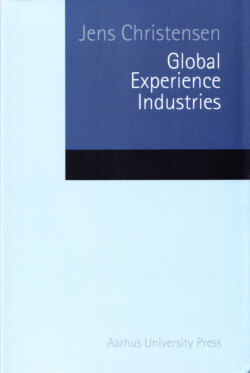Читать книгу Global Experience Industries - Jens Christensen - Страница 13
На сайте Литреса книга снята с продажи.
Global Tourism The International Tourism
ОглавлениеSince the Second World War, tourism has grown substantially. Although many take domestic vacations, growth has been strongest in international tourism.3 The number of international arrivals has increased from 25 million in 1950 to more than 800 million in 2005, corresponding to an annual growth rate of 6.5 percent (Figure 1). And international tourism is projected to keep on growing in the future. Having passed 900 million international travelers in 2007, it is predicted to reach 1.6 billion in 2020.
FIGURE 1 International Tourist Arrivals in Millions, 1950-2005
Source: UNWTO. Historical Perspective of World Tourism.
Even though their share has been declining, Western Europe and North America, mainly USA, have dominated international travel up till now. Western Europe and USA were the main tourist-receiving regions with a joint market share of approximately 90 percent in 1950, 75 percent in 1990, 70 percent in 2000 and 65 percent in 2005. And they spent a similar share of total international revenues, rising from $2 bn in 1950, $18 bn in 1970, $270 bn in 1990, $482 bn in 2000, $683 bn in 2005, and almost $800 bn in 2007. Western Europe comprised more than three quarters of Western arrivals and revenues. If travels across states had been recorded as international arrivals, the US would have reached the same level as Western Europe and if Western Europe was considered one country, international travel would be reduced to half. Today, half the international arrivals and thereby tourism revenues are in Western Europe. Western decline is just relative, because more and more people travel within or to Western Europe and North America. However, international arrivals and revenues in the rest of the world, in particular Asia and the Pacific, have been growing faster than in Western Europe and North America. While Western Europe comprises half of the international arrivals and revenues, most of the other half is equally divided between North America and Asia Pacific.
FIGURE 2 The Largest Tourist Incoming and Outgoing Countries in $bn, 2004
Source: UNWTO. Facts and Figures. Newer data are not available.
At country level, USA has the largest number of incoming and outgoing tourists and tourist spending, followed by Germany, China and Japan (Figure 2). Spain, France and Italy are next in line. In some countries more tourists are coming in than going out, particularly Spain and to some degree France and Italy, and further down the line Turkey and Greece. The reverse is the case in other countries, in particular Germany, UK, China and Japan, while in the USA outgoing and incoming tourists are almost at the same level. Germans and Britons are those who travel most internationally, followed by the Dutch and the Danes. Per capita, they spend more money on traveling than other countries, which results in a travel deficit. The main destination is to the sunshine of Southern Europe. A similar traveling pattern is seen in North America and Asia.
The fifteen nationalities which travel most comprise almost half of all incoming travels and two-thirds of all outgoing travel. Furthermore, 80 percent of all international travel in both 1990 and 2005 took place within the same regions. North Americans travel mainly across the borders of USA and Canada and USA and Mexico, and West Europeans cross borders to other countries in the region. The same is the case in Asia Pacific.
